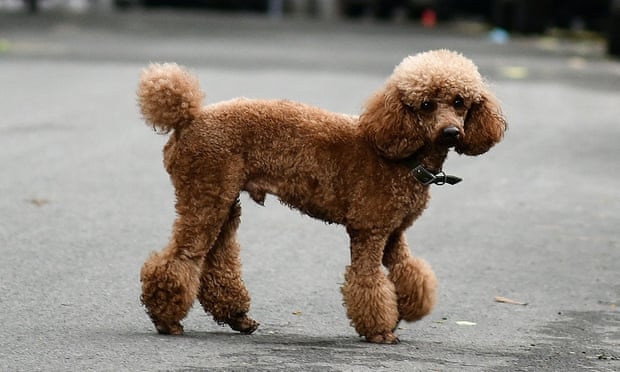Wait: Is That Dog Really Crying for Joy?!
"We had never heard of the discovery that animals shed tears in joyful situations, such as reuniting with their owners, and we were all excited that this would be a world first.""I have two standard poodles and I had one female pregnant six years ago [noticing her face was more tender than usual when nursing her puppies, the realization dawned the dog's eyes were teary].""That gave me the idea that oxytocin might increase tears, We previously observed that oxytocin is released both in dogs and owners when interacting. So we conducted a reunion experiment."Profesor Takefumi Kikusui, Azabu University, Tokyo"In this study, we demonstrated that dogs secrete tears when reuniting with their owner, and our data suggest that this tear secretion is mediated by oxytocin.""This is the first report demonstrating that positive emotion stimulates tear secretion in a non-human animal, and that oxytocin functions in tear secretion.""Unlike any other animal, dogs have evolved or have been domesticated through communication with humans and have gained high-level communication abilities with humans using eye contact."Research team study, Current Biology
 |
| Dogs have been shown to cry when they nurture their puppies and reunite with their owners. Photograph: Manan Vatsyayana/AFP/Getty Images |
Japanese scientists embarked on a research project to determine whether suspicions that dogs actually cry after a separation and reunion with their owners, found that they indeed do, representing the only other animal aside from humans known to express their emotions in this way. The scientists speculate that the trait developed as a byproduct of the intimate human-canine connection that has developed over tens of thousands of years.
Before the outcome of this study, tears of joy were assumed to be the biological monopoly of humans. The outcome of this study now validates just how emotionally adept at expressing themselves dogs are. The study began with the animal behaviour scientists recruiting 22 dogs to test how many tears were expressed, dabbing their eyes with paper. When the dogs were at home with their owners, the baseline was conducted, and followed up when scientists repeated the test in the first five minutes following the owner's return from an absence of at least five hours.
The volume of tears that were expressed with the return of the owners following a few hours of absence turned out to be the greater amount. How dogs responded to their owners coming home was the major focus, but another familiar person not their owner was tested with a similar scenario and since no tears were forthcoming, it was made manifestly evident that tears of joy were meant to convey happiness related specifically to the return of the owner.
The research team has expanded their agenda to another facet of determining dogs' emotional states of happiness expressed in tears, hoping to find out whether dogs shed similar tears of happiness when reunited with other dogs, and whether they cry as well as a result of being sad.
Inspiration for the study arose when the pet poodle of Professor Kikusui gave birth to a litter of puppies. The scientist realized that tears were being emitted from his dog's eyes while she was nursing the newborn puppies, leading him to wonder whether oxytocin was responsible for the lacrimation. Previous research discovered that oxytocin is released in vast quantities both by humans and canines when they are together.
Labels: Canine Emotion, Research


0 Comments:
Post a Comment
<< Home